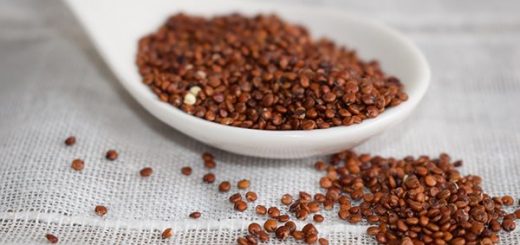10 Facts About Brain-eating Amoeba, a Rare Disease with a Risk of Death

Cases of the human brain-eating amoeba or Naegleria fowleri are still rare. The mortality rate is 97%.
The case of the human brain-eating amoeba or Naegleria fowleri claimed the first fatality in South Korea. A 50-year-old man contracted the infection after traveling for four months to Thailand.
Quoting the Korea Times, the Korea Disease Control and Prevention Agency (KDCA) reported the death case on Monday (26/12). After announcing this case, the health authorities carried out further tests and confirmed that the patient had died from Naegleria fowleri infection.
This protozoa was first discovered in 1965 by the Australian pathologist Malcom Fowle. To date, a total of 381 cases of Naegleria fowleri infection have been identified worldwide from 2018 to 2020.
Local microbiologists say South Koreans need not worry too much about the first case of the brain-eating amoeba because the parasite is unlikely to exist in the country. However, they warned that the number of cases worldwide was increasing.
Shin Ho-joon, a microbiologist at the University of Ajou said once a patient was infected with Naegleria fowleri. , the chances of survival are very low because the disease progresses rapidly.
The Centers for Disease Control and Prevention or the United States Centers for Disease Control and Prevention categorizes it as a rare disease. In America, cases of this brain-eating amoeba infected 156 people from 1962 to 2021.
The CDC provides an explanation of this brain-eating amoeba. Here are the facts about the disease:
- Found in fresh water
Amoeba Naegleria fowleri is a living, single-celled organism that is usually found in warm fresh water (such as lakes, rivers and hot springs) and soil. Only one species of Naegleria infects humans, namely the type of Naegleria fowleri.
- Enter through the nose
Naegleria fowleri infects humans when water containing the amoeba enters the nose. Usually people are exposed to this brain-eating amoeba when swimming, diving, or sticking their heads into fresh water, such as in lakes and rivers.
Infection can also occur when people use tap water contaminated with Naegleria fowleri to clean their noses.
Naegleria fowleri contamination can also come from recreational areas such as swimming pools, water playgrounds or surf parks. Recreation areas become breeding grounds for brain-eating amoebae if they don’t contain enough chlorine.
- Fatal consequences
Amoeba Naegleria fowleri that has entered the nose, then travels to the brain. The amoeba then destroys brain tissue and causes a brain-destroying infection called primary amebic meningoencephalitis (PAM). The consequences of PAM are almost always fatal and cause death.
However, the water content that is contaminated with the amoeba Naegleria fowleri is not dangerous when drunk.
- Living in warm water temperatures
Naegleria fowleri is a heat-loving (thermophilic) organism. They thrive in heat and like warm water. Researchers estimate the amoeba does best at high temperatures of up to 115°F (46°C) and can survive short periods of time at higher temperatures. Scientists have also found that it is possible that the amoeba can live in water with temperatures below 80°F.
- Not a communicable disease
Naegleria fowleri infection cannot be spread from one person to another.
- Rare disease
Naegleria fowleri infection is rare, this disease is in the rare category. In the United States, during the period 2012 to 2021 there were 31 infections reported in the United States. The case of this brain-eating amoeba infected 156 people from 1962 to 2021.
The CDC defines a rare disease as one that affects fewer than 200,000 people in the United States.
- Symptoms of Naegleria fowleri infection
Naegleria fowleri causes PAM, a brain infection that destroys brain tissue. In its early stages, the symptoms of PAM may be similar to those of meningitis.
The first symptoms of PAM usually begin about 5 days after infection, or they can begin within 1 to 12 days.
Common symptoms are headache, fever, nausea or vomiting. Later symptoms can include a stiff neck, confusion, lack of awareness of people and the environment around them, seizures, hallucinations, and coma.
The disease progresses rapidly and usually causes death within 1 to 18 days.
- Brain tissue is damaged
This Naegleria fowleri infection destroys brain tissue, causing brain swelling and death.
- High risk of death
The average death rate from this brain-eating amoeba is over 97%. The CDC noted that only four people survived out of 154 people known to be infected with this brain-eating amoeba in the United States between 1962 and 2021.
- Treatment
The CDC is still studying the best drugs to treat this infection. Currently, PAM is treated with a combination of drugs, such as amphotericin B, azithromycin, fluconazole, rifampicin, miltefosin, and dexamethasone.
This drug is used because it is considered effective against Naegleria fowleri and has been used to treat patients who have survived. Recent studies have shown the drug Miltefosin kills Naegleria fowleri in the laboratory and has been used to treat three people who survived.











